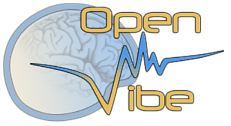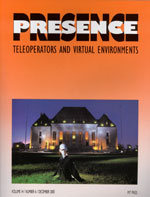
Virtual reality (VR) is a simulated experience that employs pose tracking and 3D near-eye displays to give the user an immersive feel of a virtual world. Applications of virtual reality include entertainment, education and business. Other distinct types of VR-style technology include augmented reality and mixed reality, sometimes referred to as extended reality or XR, although definitions are currently changing due to the nascence of the industry.

Telerobotics is the area of robotics concerned with the control of semi-autonomous robots from a distance, chiefly using television, wireless networks or tethered connections. It is a combination of two major subfields, which are teleoperation and telepresence.

Computer-mediated reality refers to the ability to add to, subtract information from, or otherwise manipulate one's perception of reality through the use of a wearable computer or hand-held device such as a smartphone.
A MOO is a text-based online virtual reality system to which multiple users (players) are connected at the same time.
Sensorial transposition is a technique used in remote reality to transfer the perception of one sense to another, or where a user receives feedback through a different sense unexpectedly. For example, a thermographic camera allows us to have a visual sensation of the temperature, which is atypical thermoception.
The virtuality continuum is a continuous scale ranging between the completely virtual, a virtuality, and the completely real, reality. The reality–virtuality continuum therefore encompasses all possible variations and compositions of real and virtual objects. It has been described as a concept in new media and computer science, but in fact it could be considered a matter of anthropology. The concept was first introduced by Paul Milgram.
Transformed social interaction (TSI) is a research paradigm and theoretical framework related to social interaction in virtual environments.

Immersion into virtual reality (VR) is a perception of being physically present in a non-physical world. The perception is created by surrounding the user of the VR system in images, sound or other stimuli that provide an engrossing total environment.
Presence is a theoretical concept describing the extent to which media represent the world. Presence is further described by Matthew Lombard and Theresa Ditton as “an illusion that a mediated experience is not mediated." Today, it often considers the effect that people experience when they interact with a computer-mediated or computer-generated environment. The conceptualization of presence borrows from multiple fields including communication, computer science, psychology, science, engineering, philosophy, and the arts. The concept of presence accounts for a variety of computer applications and Web-based entertainment today that are developed on the fundamentals of the phenomenon, in order to give people the sense of, as Sheridan called it, “being there."
A projection augmented model is an element sometimes employed in virtual reality systems. It consists of a physical three-dimensional model onto which a computer image is projected to create a realistic looking object. Importantly, the physical model is the same geometric shape as the object that the PA model depicts.
Social interactions in MMORPGS take the form of in-game communication, virtual behaviors, and the development of interpersonal and group relationships. In massive multiplayer online role-playing games (MMORPGs), cooperation between players to accomplish difficult tasks is often an integral mechanic of gameplay, and organized groups of players, often called guilds, clans, or factions, emerge. Sometimes the relationships players from within the game spill over into friendships or romantic relationships in the material world. In other instances, romantic partners and groups of material world friends find that playing together strengthens their bonds.
Social presence theory explores how the "sense of being with another" is influenced by digital interfaces in human-computer interactions. Developed from the foundations of interpersonal communication and symbolic interactionism, social presence theory was first formally introduced by John Short, Ederyn Williams, and Bruce Christie in The Social Psychology of Telecommunications. Research on social presence theory has recently developed to examine the efficacy of telecommunications media, including SNS communications. The theory notes that computer-based communication is lower in social presence than face-to-face communication, but different computer-based communications can affect the levels of social presence between communicators and receivers.
Virtual worlds are an example of an early 21st-century post-convergent medium. Virtual worlds present a complex matrix of interdependent relationships among such media elements as sound, vision, network, time, interactivity, and other prior technologies. In this view, no individual media element comprising virtual worlds exists without the others and all affect each other, albeit not equally. Although this complex system contains many types of media, a user may choose to focus on only a single aspect, such as streaming an audio file. The potential for a rich engagement within and between agents within a medium that is best characterized as Gilles Deleuze’s network of relations between differential velocities that are not distinguished by form or functionality and Anna Munster’s differential relations between embodiment and technics, in which both artist/composer and user become nodes in this interdependent network, satisfying Luciano Floridi’s test of successful observability and backward and forward presence at different Levels of Abstraction.

OpenViBE is a software platform dedicated to designing, testing and using brain-computer interfaces. The package includes a Designer tool to create and run custom applications, along with several pre-configured and demo programs which are ready for use.
The Virtual Human Interaction Lab (VHIL) at Stanford University. It was founded in 2003 by Jeremy Bailenson, associate professor of communication at Stanford University. The lab conducts research for the Communication Department.
Virtual reality sickness, or VR sickness occurs when exposure to a virtual environment causes symptoms that are similar to motion sickness symptoms. The most common symptoms are general discomfort, eye strain, headache, stomach awareness, nausea, vomiting, pallor, sweating, fatigue, drowsiness, disorientation, and apathy. Other symptoms include postural instability and retching. Common causes are low frame rate, input lag, and the vergence-accommodation-conflict.
Ronald Azuma is an American computer scientist, widely recognized for contributing to the field of augmented reality (AR). His work A survey of augmented reality became the most cited article in the AR field and is one of the most influential MIT Press papers of all time. Azuma is considered to provide a commonly accepted definition of AR and is often named one of AR’s most recognized experts.

Virtual reality applications are applications that make use of virtual reality (VR), an immersive sensory experience that digitally simulates a virtual environment. Applications have been developed in a variety of domains, such as education, architectural and urban design, digital marketing and activism, engineering and robotics, entertainment, virtual communities, fine arts, healthcare and clinical therapies, heritage and archaeology, occupational safety, social science and psychology.
Immersive learning is a learning method which students being immersed into a virtual dialogue, the feeling of presence is used as an evidence of getting immersed. The virtual dialogue can be created by two ways, the usage of virtual technics, and the narrative like reading a book. The motivations of using virtual reality (VR) for teaching contain: learning efficiency, time problems, physical inaccessibility, limits due to a dangerous situation and ethical problems.






